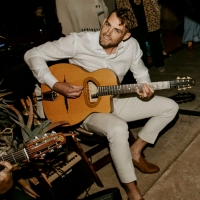DjangoBooks.com
Welcome to our Community!
Categories
- 20K All Categories
- 1.1K General
- 476 Welcome
- 59 Archtop Eddy's Corner
- 146 CD, DVD, and Concert Reviews
- 385 FAQ
- 26 Gypsy Jazz Italia
- 27 Photos
- 202 Gypsy Picking
- 21 Unaccompanied Django
- 15 Pearl Django Play-Along Vol.1
- 17 Gypsy Fire
- 45 Gypsy Rhythm
- 1.4K Gypsy Jazz University - Get Educated
- 131 Gypsy Jazz 101
- 227 Repertoire
- 218 History
- 708 Technique
- 51 Licks and Patterns
- 6 Daniel Givone Manouche Guitare Method Users Group
- 20 Eddie Lang Club
- 1.3K Gypsy Jazz Gear
- 802 Guitars, Strings, Picks, Amps, Pickups and Other Accessories
- 459 Classifieds
- 49 Recording
- 62 Other Instruments
- 18 Violin
- 5 Mandolin
- 22 Accordion
- 7 Bass
- 10 Woodwinds
- 347 Gypsy Jazz Events
- 143 North America
- 109 Europe
- 95 International
In this Discussion
Who's Online (0)
Gypsy jazz chord voicings
 geraldo
Sydney✭ 1978 Ibanez 175, Maton EA80C, 1982 Strat, '63 reissue Tele
geraldo
Sydney✭ 1978 Ibanez 175, Maton EA80C, 1982 Strat, '63 reissue Tele
Hi - I'm have some jazz experience but I'm new to gypsy jazz. I'm having a bit of difficulty finding out what chord voicings to use. Is there a simple chart or guide that I can use that shows gypsy jazz chord voicings for each chord (versus standard jazz voicings)?
Also, for a given piece (e.g. All of Me) is it okay to use any of the gypsy jazz voicings for each chord at any point in the piece, or does gypsy jazz tradition tend to dictate that very specific voicings/changes are used? I realise that's a bit of a clumsy question - I'm just trying to get a sense of how specific gypsy jazz players are in terms of their expectations from accompanists.
Also, for a given piece (e.g. All of Me) is it okay to use any of the gypsy jazz voicings for each chord at any point in the piece, or does gypsy jazz tradition tend to dictate that very specific voicings/changes are used? I realise that's a bit of a clumsy question - I'm just trying to get a sense of how specific gypsy jazz players are in terms of their expectations from accompanists.










Comments
http://www.djangobooks.com/forum/discussion/8318/gypsy-jazz-chord-resources
http://www.djangobooks.com/Item/wremble
which has a chart very similar to the one you're asking for. It helped me out a lot.
Also the chords used and explained in this video are pretty much industry standard.
I got a lot out of these two resources, so hopefully you can too. The book costs money, and the youtube video is free, so I know where I would start. Haha
As for the second part of your question, I believe you can pretty much use any gypsy jazz voicing for any chord throughout the song. Although! Keep in mind some lead players like to hear certain things from the rhythm, so that is one reason to learn multiple voicings for each chord.
Anthony
Listen to Django in the All Star Sessions CD. Says it all IMO
There are some rules that are really worth considering. Like this one; in a dominant chord (in key of C that would be G7) the third (a B natural) really wants to resolve to C in the same octave. There are lots of others, they can all be broken and change from style to style and even from song to song. This means that if you want hard and fast answers you are mostly going to miss the point.
Chord dictionaries are of limited use, think of a chord like a single letter and a cadence as a word. A dictionary with only letters is not going to help anyone spell. I personally don't like to hear arbitrary voicings which match the chord symbol that the player is hearing but have no real relationship with the chords around them in terms of voice leading (or melody making which is really what voice leading is all about).
Micheal has a great book with progressions, it would be a few years work getting through it.
D.
If you are familiar with standard jazz voicings on the lower strings there really isn't much difference. In general, stay away from the top 2 strings when comping unless you need to use them (rare). Some players like the sound of some of the 'thicker' voicings like the 6/9 versus just a 6th chord. Personally I avoid the higher pitch color tones like the 9th and leave that up to the soloist plus I'm lazy and prefer the more spare voicings (a la Freddie Green) since we don't really need the fullness and volume in this day and age with modern amplification and even acoustically you don't want to overpower the soloist.
Initially, if in doubt, less is more. And keep it simple and percussive. The pulse is as important as the actual tones that you are using. You are also the drummer.
https://www.soundslice.com/lessons/gypsy-jazz-chord-voicings/
The goal was to go beyond the simple chord diagrams and talk about fingering, when to use which shape, how to practice them, etc.
Adrian
New fishing rod designs are legion.
Is there printable material with the course